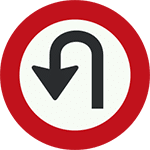Driving in The Netherlands can be a lot of fun! The roads are smooth, wide, and easy to navigate. Unfortunately, there’s a tricky side-effect to nice roads. When they’re empty, it’s so inviting to drive fast!
But breaking Dutch traffic rules is an expensive hobby. The cheapest fines are around €25 and the highest are over €300!
Fortunately, there are some easy ways to avoid breaking the rules. We asked Dutch drivers for their own tips & tricks and have laid them out in this blog.
Tip #1 – The Flitsmeister app
Our Dutch drivers all agreed: Flitsmeister is the number one companion for driving in the Netherlands! You can download it directly from the App Store or Google Play.
Flitsmeister helps avoid unnecessary fines – big time! It alerts you about approaching speed cameras, reminds you of the maximum speed, and provides real-time traffic information.
We highly recommend you install this app before your first drive in The Netherlands. Use it well and you’ll never have a speeding ticket!
We don’t get paid to mention Flitsmeister – we just really like it!
Tip #2 – Know your traffic signs
We challenge you to follow 1km of road in The Netherlands and count the traffic signs. There really are A LOT of them!
Many of our signs are similar to other European countries. Nonetheless, we recommend you check your knowledge with an online test.
This specific test helps new Dutch drivers prepare for their Theory Exam. Select “random” and it will test you on traffic signs, priority rules, and speed limits – all in one!
You’ll see instant feedback about your answer. If you answered wrong, it shows the correct answer and a short explanation.
We highly recommend taking this test before your first drive on Dutch roads. You’ll be more confident and avoid fines like a pro!
Tip #3 – Learn unusual rules and signs
What’s worse than getting punished for something you didn’t even know was wrong?! Avoid “surprise fines” by paying extra attention to these unusual traffic laws and signs.

Beware of shark teeth. Fortunately, these teeth don’t bite – but do approach with care! If you come across a row of them with the sharp end pointed at you, give way to traffic at the junction. These “teeth” often replace “give way” and “yield” signs that are common in other countries.

On an equal crossing, right goes before left. Most residential crossroads are unmarked: no shark teeth and no “give way” or “yield signs”. On an unmarked crossroad, always give way to any vehicles coming from the right.
In the example above, the blue car has to wait for the red car to pass in any direction. Only after the red car passes, the blue car can go.

The U-turn sign above means that it’s FORBIDDEN to make a U-turn. So really, don’t do it!
Some countries only put signs when it IS allowed to make a U-turn. In the Netherlands it’s the other way around: U-turns are always allowed UNLESS you see the sign above.
Again, if see a U-turn sign with a red circle around it it’s forbidden to make a U-turn!

This diamond-shaped sign says you’re on a priority road, so you can ignore the “right goes first” rule here. Keep paying attention though, because the next sign with black diagonal stripes means you no longer have the right of way.

Tip #4: Plan your trip in advance
Being late is one of the biggest reasons for speeding. Even the most careful drivers might mess up and get a fine this way.
Don’t be one of those people! Be smart and plan your trip ahead. Navigation apps such as Flitsmeister (yes, you really should get it!) show you the fastest route, traffic jams, and even road works. Make sure to check the estimated time of arrival.. and leave on time!
Enjoyed our tips or have some tips of your own? Let us know in the comment section below!
